A lodge was,
originally, a small house in the grounds of a larger one, and
intended for temporary use, for example, whilst hunting. The
word is still used in the sense of a house within the grounds of a
larger house, usually at the gates of the main drive. But it
is also used as the name, or part of the name, of a house standing
in its own grounds, such as “Ivy Lodge”.
A gatehouse was, originally,
the building around the entrance through the walls of a town or
castle. In later times it came to be used as a general term
for any building near the gates of the main drive to a large house.
The term “gatekeeper’s
house” indicated a gatehouse in which the man who opened and closed
the gates across the main drive lived. Only the biggest houses
could have afforded a full time gate keeper, so the occupant in most
gatekeeper’s houses, would have other functions such as gardening.
When the Victorians came to build public parks they usually provided
gate houses which were occupied by park staff and who opened and
shut the park gates morning and evening.
In due course the same
applied to gatehouses generally and to lodges. They became, in
effect, staff accommodation. Most of the buildings – mainly
Victorian - shown on these pages fall into this category.
Staff could also be accommodated in houses elsewhere on the estate
and two examples of “estate villages” are shown on these pages.
Coach houses were built to
accommodate both the carriages used by the occupants of the main
house and, often, the coachman and other members of staff connected
with the horses and carriages. In later times they were often
converted into garages for cars. These buildings were often at
or near the gates to the main drive and the occupant would have a
gate keeping function.
Many of these buildings seem
to have survived better than the large house to which they were
attached. They provide a size of accommodation more in keeping
with modern needs.
Any further identifications
of gatehouses and lodges in Wolverhampton would be gratefully
received. Please email me at: stonechat2018@gmail.com
Lodge to
Tettenhall Wood House, Wood Road.
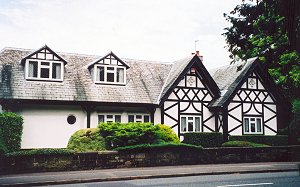 |
The house was the home of Sir Alfred Hickman.
It was a beautiful house which was demolished in 1969 to
build a new housing estate.
Sir Alfred was an ironmaster and industrialist.
His steel works in Bilston later became Stewarts and
Lloyds and then BSC. He also owned Wergs Hall and
Wightwick Hall. |
Lodge to Compton Hall, Compton Road.
|
The Hall was built between 1840 and 1850.
Thomas Elwell was a hardware merchant living here in
1856. It passed through many hands, including
Charles Elwell, Henry Denton, Sir John Morris,William
Hodson, Thomas Byron Adams JP (around 1900), a Mr.Jenks,
the the Eye Infirmary, and finally and currently,
Compton Hospice. The words "Jenyns Lodge" are above
the door of the lodge. |
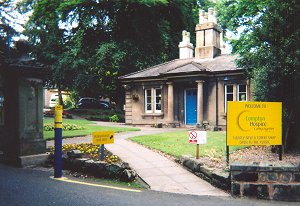 |
The Coach House, corner of Grove Lane and Church Road,
Tettenhall Wood.
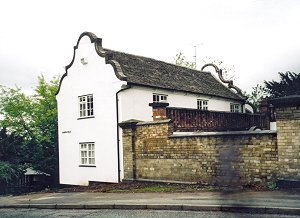 |
This is the coach house to "Afcot", which lay
directly behind Christ Church and Church Road. It
was the home of Sir Charles Marston from 1902 to 1928.
He later went to live in Tunbridge Wells and then
Stratford upon Avon, but he always kept a home in the
area, namely "Longville", Pattingham.
Before Sir Charles the house had been called
"Springbank". Later it was "Broomfield House", the home
of H. N. Edge. |
Coach Houses in Ormes Lane, Tettenhall Wood
|
The single storey building on the left is the coach
house to what is now called Bromley House. On the right
is the coachman's cottage to "Southbourne".
A James Edward Underhill was in "Southbourne" around
1902; and a Mrs. Iles lived here in the 1940s. The
house was later demolished and new houses built in its
place. |
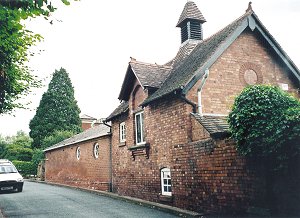 |
North and South Lodges, West Park
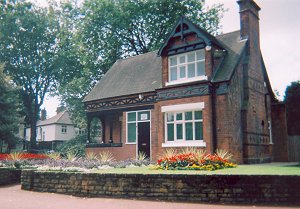 |
These lodges, built of pressed red brick with timber
features, are exact mirror images of each other.
This is the South Lodge, with the verandah to the left.
There is a small garden behind each lodge. They
were designed by G. Eastlake Thomas, the Borough
Engineer. The park was opened on Whit Monday,
1881. The lodges would have housed park keepers and
their families. The keepers saw to the daily
running of the park - and opening and closing the gates,
morning and evening.
Planning permission has been applied for to change
the North Lodge's use to teaching and office facilities
(2008). |
Lodge to Danescourt, Danescourt Road, Tettenhall.
|
The house was built in 1869 by Edward Perry,
tinsmith and japanner, whose works were in Paul Street.
In 1908 the house was owned by Edward Hickman.
Later it was occupied by troops. It was eventually
demolished in 1958. |
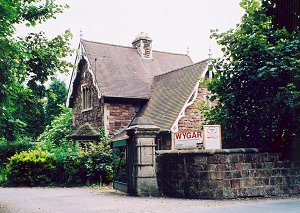 |
Avenue House Lodge, the Rock, Tettenhall.
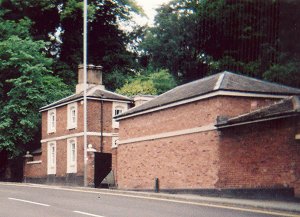 |
This is the lodge to Avenue House, which still
stands off Clifton Road. They are connected by a
roadway which winds up the hill side. A William Pearce
Baker lived in the house around 1900. An
N.P.Bayliss lived there in the 1940s.
The coach house and stable block were fully restored
by the current owner. |
Elmsdale Lodge, corner of Viewlands Drive and Bridgnorth Road.
|
This lodge stood by the carriage drive to Elmsdale
Hall, the home of Colonel Henry Loveridge, the japanner
and tinsmith, from 1883 and before him the home of Sir
John Morris. The lodge and the house are in the
same architectural style. Later it was owned by Jesse
Varley, the embezzler; and then by a Miss Swift, who
changed its name to Viewlands. It was converted
into flats in 1990 and has reverted to its original name
of Elmsdale. |
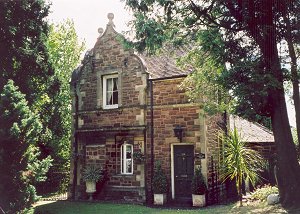 |
|

